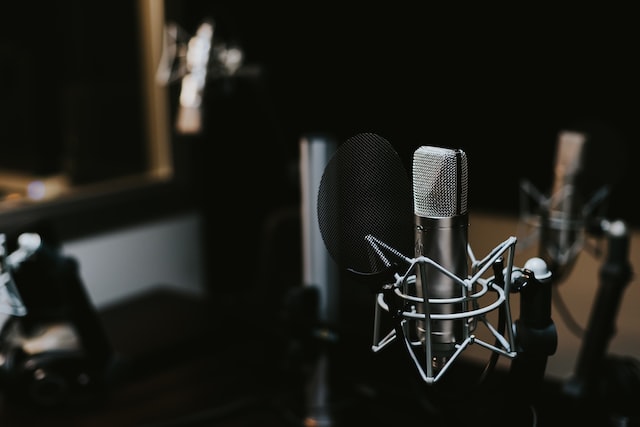Sound recording is the process of capturing and storing audio information. There are several different types of sound recordings, each with its own advantages and disadvantages. The most common type of sound recording is digital recording, which offers high quality and flexibility. However, analog recordings may be more accurate or easier to edit. Other types of sound recordings include MIDI recordings and Field Recordings. (Before you get too excited about all the different types of sound recordings, keep in mind that not all audio needs to be recorded! Sometimes just playing back a pre-recorded file will suffice.)
There are four main types of sound recording – analog, digital, tape, and hard disk
Recording sound has come a long way since ancient times when messages and stories were painted on cave walls. Nowadays, we have four main types of sound recording that have revolutionized the way we experience sound: analog, digital, tape, and hard disk. Analog recordings are made using magnetic recordings onto a physical material such as vinyl records or cassette tapes. Digital recordings are encoded in numerical pattern in electronic memory, making it easier to store and manipulate data. Tape recorders uses magnetic tape save audio signals while hard disk recorders stores larger amounts of data than tapes. Each type has its own distinct advantages and disadvantages depending on the purpose of the recording, so it is important to determine which format can best provide the desired result.
Analog recordings use a needle to read vibrations from a record player
Analog recordings have been around for centuries, and use a needle to read vibrations from a record player. This method of reading audio contents has often been studied in research papers as we search for the best ways to preserve audio recordings over time. While it’s been out of fashion since the 80s when digital technology first came onto the scene, newer technologies are being developed that combine analog recordings with digital ones, so that the sound produced won’t deteriorate over time. Thus, the research done into analog recordings is still relevant today as we look to improve our methods of archiving audio.
Digital recordings use a computer to store and process the data
Digital recordings offer a level of convenience and accuracy that is impossible to achieve with traditional analog recording. By using a computer to store and process the data associated with its digital recording, digital audio files can be manipulated more easily than analog recordings. This means that sound engineers and producers have access to unlimited sound editing capabilities, allowing them to create higher quality sounds with ease. Furthermore, people can enjoy a higher standard of sound when they take advantage of digital recordings, as there is less background noise from tape hiss or other sources. In addition, digital recordings are easier to archive and share—both important factors for music industry professionals or for everyday individuals who want to store their favorite records in a way that’s accessible but also preserves top-notch audio quality.
Tape recordings use magnetic tape to store the data
Tape recordings have been a reliable technology for capturing and storing audio data, whether it is music, lectures, sermons or spoken dialogue. Magnetic tape is integral to this process; the media consists of ultra-thin plastic strips with fine iron particles sprayed onto one side. As the tape runs through a recording device, electrical signals are converted to magnetic fields which then magnetize the particles on the surface. When playback occurs, the magnetized particles create an electrical current in an electromagnet which produces sound from as small as a microphone to large speakers. This technology is still widely used today in professional recording studios and converters which provide quick access to large amounts of recorded material.
Hard disk recordings use a spinning disk to store the data
Hard disk recordings use a spinning disk to store and access data, providing an efficient storage solution in comparison to other types of storage media. The hard disks can record sound, images, and videos at a much faster rate than tape recordings or VHS recording while also allowing for easy editing. Moreover, they are more durable and reliable than tapes due to having fewer moving parts in their construction. Because of these advantages, hard disk recording has become a popular way to save digital files and transfer them from one person or device to another. From film studios editing movies to home video enthusiasts amassing their family memories on disk drive, this type of recording technology is being used increasingly all over the world.
Each type of recording has its own advantages and disadvantages
When it comes to recording, there are many different types of media to choose from, each with their own unique advantages and disadvantages. Analog recording is the oldest and most basic available option, allowing for a warm sound without any digital interference. However, for maximum control and convenience, digital recordings can be beneficial because of their high audio quality and ease of editing. Tape recordings are also popular as they provide an interesting tone that cannot be easily produced otherwise. Whatever style you use, recording takes skill and patience in order to create music that reflects your vision. Ultimately, you will have to weigh the pros and cons of each type of recording before deciding which one is best for your needs.
Now that you know the different types of sound recordings, you can decide which one is right for you. If you want the best quality, go with digital or hard disk recording. If you want something more affordable, go with tape or analog recording. No matter what type of recording you choose, make sure to enjoy the music!
